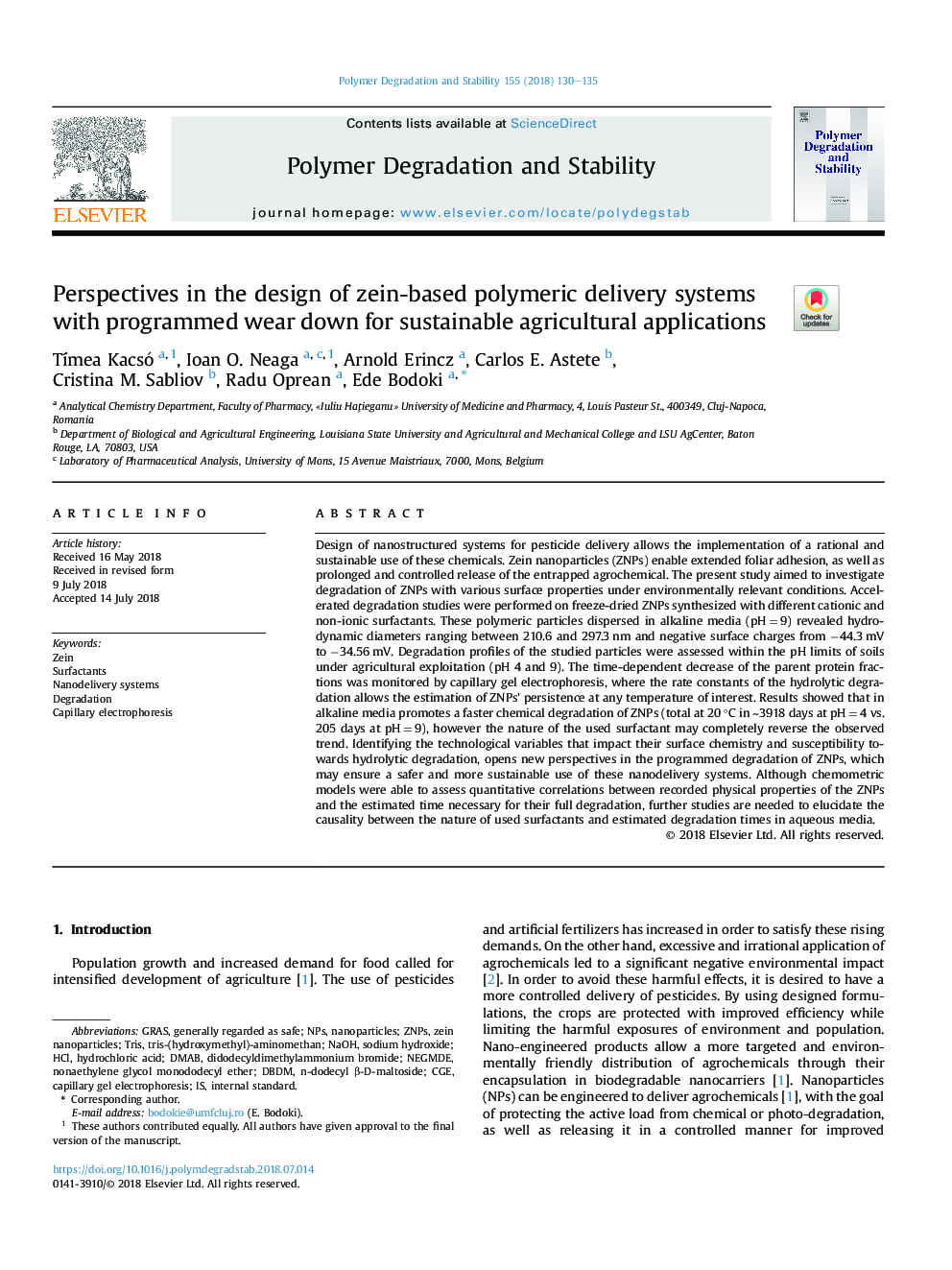| Article ID | Journal | Published Year | Pages | File Type |
|---|---|---|---|---|
| 7823907 | Polymer Degradation and Stability | 2018 | 6 Pages |
Abstract
Design of nanostructured systems for pesticide delivery allows the implementation of a rational and sustainable use of these chemicals. Zein nanoparticles (ZNPs) enable extended foliar adhesion, as well as prolonged and controlled release of the entrapped agrochemical. The present study aimed to investigate degradation of ZNPs with various surface properties under environmentally relevant conditions. Accelerated degradation studies were performed on freeze-dried ZNPs synthesized with different cationic and non-ionic surfactants. These polymeric particles dispersed in alkaline media (pHâ¯=â¯9) revealed hydrodynamic diameters ranging between 210.6 and 297.3â¯nm and negative surface charges from â44.3â¯mV to â34.56â¯mV. Degradation profiles of the studied particles were assessed within the pH limits of soils under agricultural exploitation (pH 4 and 9). The time-dependent decrease of the parent protein fractions was monitored by capillary gel electrophoresis, where the rate constants of the hydrolytic degradation allows the estimation of ZNPs' persistence at any temperature of interest. Results showed that in alkaline media promotes a faster chemical degradation of ZNPs (total at 20â¯Â°C in â¼3918 days at pHâ¯=â¯4 vs. 205 days at pHâ¯=â¯9), however the nature of the used surfactant may completely reverse the observed trend. Identifying the technological variables that impact their surface chemistry and susceptibility towards hydrolytic degradation, opens new perspectives in the programmed degradation of ZNPs, which may ensure a safer and more sustainable use of these nanodelivery systems. Although chemometric models were able to assess quantitative correlations between recorded physical properties of the ZNPs and the estimated time necessary for their full degradation, further studies are needed to elucidate the causality between the nature of used surfactants and estimated degradation times in aqueous media.
Keywords
Related Topics
Physical Sciences and Engineering
Chemistry
Organic Chemistry
Authors
TÃmea Kacsó, Ioan O. Neaga, Arnold Erincz, Carlos E. Astete, Cristina M. Sabliov, Radu Oprean, Ede Bodoki,
